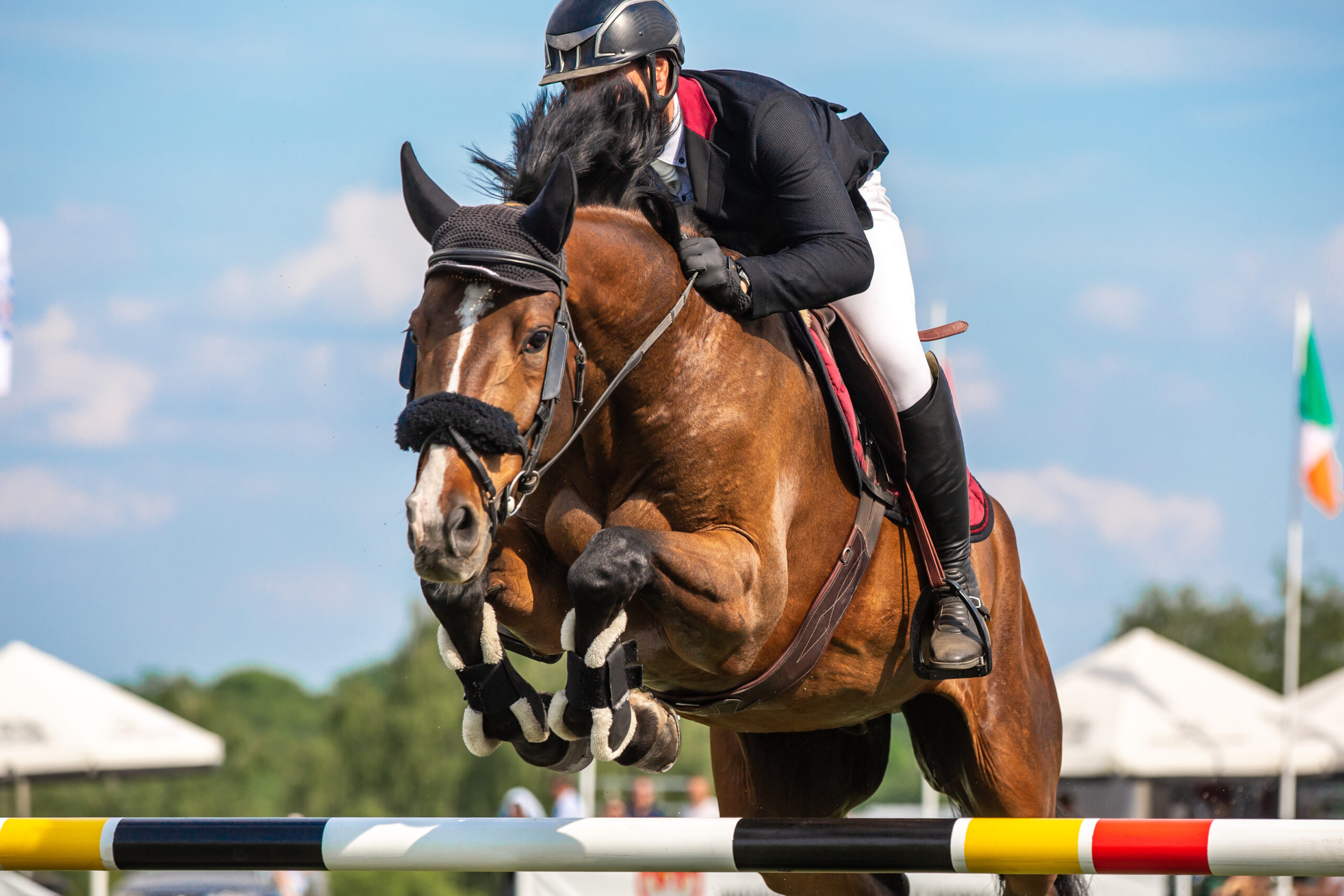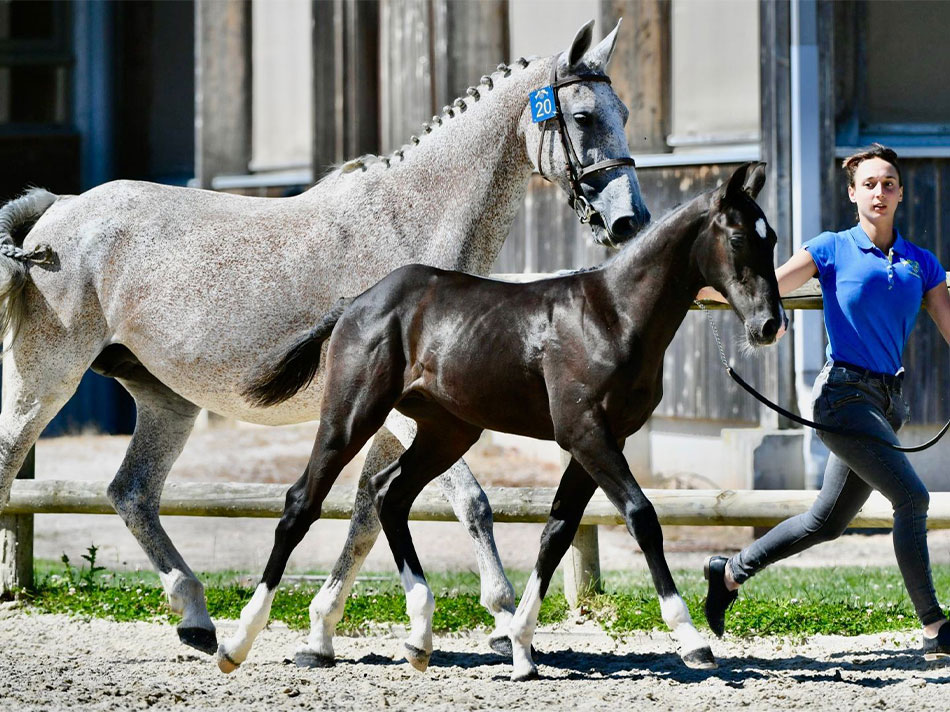- Accueil
- The ever changing landscape of stallion ownership in equestrian sports
29/02/24
The ever changing landscape of stallion ownership in equestrian sports
One of the major differences between horse racing and equestrian sports resides in the commercialisation of stallions and breeding rights.
Whereas artificial insemination technics are strictly forbidden in horse racing, it is actually one of the main breeding technics used in equestrian sports.
Because of this difference, thoroughbred stud fees can rocket up to 300 000 euros per live cover, given the limited amount of live covers a stallion can actually perform each season and over its lifetime. Equestrian sports stallions can produce more offspring via artificial insemination technics and can continue to do so after they die, meaning that more quantities can be sold but for less money.
For a certain amount of time, sports stallion owners were, to some extent, able to control sales and market prices throughout an international market. Investments were made in owning stallions on the understanding that by owning a stallion, you also retrieved exclusive ownership of its cells and sperm for the full lifetime of the stallion and even posthumously.
The initial cracks started to show in an open letter signed by important stallion groups when attending the annnual WFBSH conference in the Lion d’Angers in 2019, requesting the creation of a common database in order to control foal registrations.
Then Covid-19 hit the world and with that an increase in online auctions and internet selling making sales go up and, at the same time, reinforcing change in the stallion ownership game.
The first big litigation to hit the ground in Europe concerned Totilas, famously sold by Mr. Kees Visser to Paul Schockemöhle after the 2010 World Equestrian Games. The sale allowed Mr. Visser to keep 244 straws for his own breeding uses.
In 2021, Mr. Visser announced the sale of his frozen semen and Mr. Schockemöhle immediately sued him on the grounds that he considered himself to be the sole and unique owner of the semen. In 2023, the Dutch courts decided that Mr. Schockemöhle was the exclusive owner of the stallion and therefore the exclusive owner of all of the semen.
The second significant litigation concerns the major French stallion owner Groupe France Elevage (GFE) and relates to another important stallion, Kannan and its ex-co-owner The Stallion Company.
GFE and The Stallion Company were co-owners of Kannan up until 2019, date upon which GFE bought The Stallion Company out. The sales agreement allegedly provided a certain amount of distribution rights concerning the semen that had already been individually collected by each party.
In the first case between the ex-co-owners; GFE sued The Stallion Company on the grounds that the sales and distribution agreement only allowed the Stallion Company to sell Kannan “covers” (“saillie”) and not semen straws.
In September 2022, the French court of Caen ruled against GFE, considering that the lack of any specification in the sales agreement meant that The Stallion Company was authorised to commercialise Kannan, in the agreed geographical zones, in any way, including the sales of straws.
GFE has decided to take this case to the French supreme court.
The second case concerns three Kannan clones, only one of which has survived. The Stallion Company had collected stem cells while it was a Kannan co-owner, two years before he was bought out by GFE. The only surviving foal was born in 2020, after The Stallion Company had been bought out by GFE.
Upon finding out, GFE requested ownership of the clone and of the genetic material that had been collected by The Stallion Company.
The French court of Angers used article 547 of the French civil code according to which ownership of an object implies ownership of all objects that it is susceptible to produce. This article was first enacted in 1804, at a time when nobody could predict the cloning of animals and the legal consequences.
This is a major decision under French law as it confirms that clones and the genetic property used to create it are the automatic property of the owner of the original product.
The French court stated that the clone was born in 2020, time at which GFE was the sole and exclusive owner of Kannan. Accordingly, the court ruled that GFE is therefore also sole and exclusive owner of the clone; despite the fact that the stem cells used to create it were collected while GFE and the Stallion Company were co-owners.
The remaining unused genetic material collected by The Stallion Company during the co-ownership period belongs to both parties.
It also leads a new line of questioning regarding the automatic ownership of straws and semen. We can imagine the way GFE, as well as many other stallion owners, would like to use this decision to reinforce their rights on semen.
Will a French court go as far as considering that semen straws are also “industrial fruits”, therefore meaning that the stallion owner is automatically the owner of all semen straws, unless provided otherwise?
Finally, a recent case which has been entrusted to our firm concerns a pre-litigation information request in which a major stallion owner has asked an online auction organiser to provide the EU sanitary documentation which, according to the stallion owner, proves that the litigious straws were legally purchased.
This litigation is additionally significant and shows that there is no clear legislation regulating the commercialisation of semen.
Because of this legal void, stallion owners are reaching out and asking for the extension of EU sanitary regulations, requiring sperm collection and freezing centres to issue sanitary certificates when sending sperm in France and throughout the world.
In this case, the stallion owner claims this sanitary regulation also applies to the commercialisation of straws and semen, meaning that any individual selling or purchasing sperm should be able to provide the sanitary evidence that the sperm has been sold and dispatched legally.
The reasoning is complicated and may actually create more issues than it is meant to solve.
Indeed, the EU sanitary regulations is in place to limit the development of illness and diseases when collecting and transferring sperm. The regulations apply to sperm collection and freezing centres because these are the entities who control the processes and are therefore logically liable in the event of a sanitary regulation breach.
Any extension of this EU sanitary regulations to stallion owners, which seems far reaching, could also entail an extension of their liability to guaranteeing that the collection and freezing sperm centres comply with all sanitary regulations.
The decision will be rendered by the French courts in May.
It is clear that stallion ownership is currently becoming a major issue in the equestrian world, and it seems that the major stallion players have decided to ask the courts to try and fill the legal void.
This strategy, whether it be profitable or not to stallion owners and breeders, shall have a deep impact on the international market.
Indeed, there is no guarantee that all courts from different countries will decide in the same manner. On the contrary, there is a strong probability that stallion owners will have different rights based on where the stallions are based and the law which applies to their commercialisation.
We therefore strongly recommend that anybody wishing to invest in sport horse stallions and their commercialisation request legal advice to protect their rights and investments.
Holly Jessopp, Partner.
contact@inscio.fr/holly.jessopp@inscio.fr



